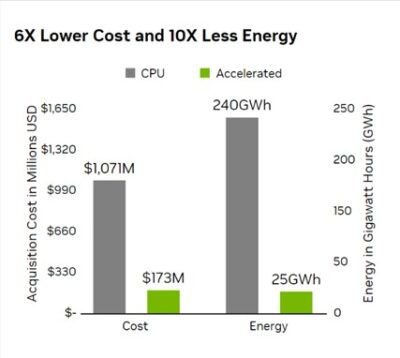Visual effects studios have long relied on render farms — vast numbers of servers — for computationally intensive, complex special effects, but that landscape is rapidly changing.
High silicon and energy costs at these server facilities, which can be restricted in performance gains by Moore’s law, cut into studio profits and increase production time.
To avoid those challenges, Wylie Co. — the visual effects studio behind Oscar-winning Dune, Marvel titles, HBO and Netflix work — is going all in on GPU rendering.
It’s estimated that rendering photoreal visual effects and stylized animations consumes nearly 10 billion CPU core hours a year. To render a single animated feature film, render farms can involve more than 50,000 CPU cores working for more than 300 million CPU core hours. These resources can create a substantial carbon effect and physical footprint.
While many studios already use GPUs for one leg of the rendering process, Wylie Co. is now using it for about everything, including final renders as well as for AI used in wire removals and many other aspects of compositing and visual effects workflows.
Move to GPUs Boosts Performance 24X
Render farms allow visual effects studios to offload large files of images, scenes or entire feature films, freeing up studio resources while these jobs may take hours or weeks to finish.
Many studios are moving to multi-GPU workstations that can handle some of the tasks that were previously sent to render farms. This enables studios to iterate faster as well as compress production time and costs.
Wylie Co. migrated to GPUs across a number of areas, realizing overall a 24x performance leap compared with CPUs1.
GPUs Deliver 10X Lower Energy Usage

While studios would like to reduce their costs from these compute-heavy rendering tasks, the reality is that the decreased energy and space costs also bring a lower carbon footprint benefit.
GPUs used in visual effects rendering pipelines can increase performance by as much as 46x2 while reducing energy consumption by 5x and capital expenses by 6x.
By switching to GPUs, the industry stands to save $900 million in acquisition costs worldwide and 215 gigawatt hours in energy consumed compared with using CPU-based render farms.
Learn about NVIDIA energy-efficiency solutions for digital rendering
